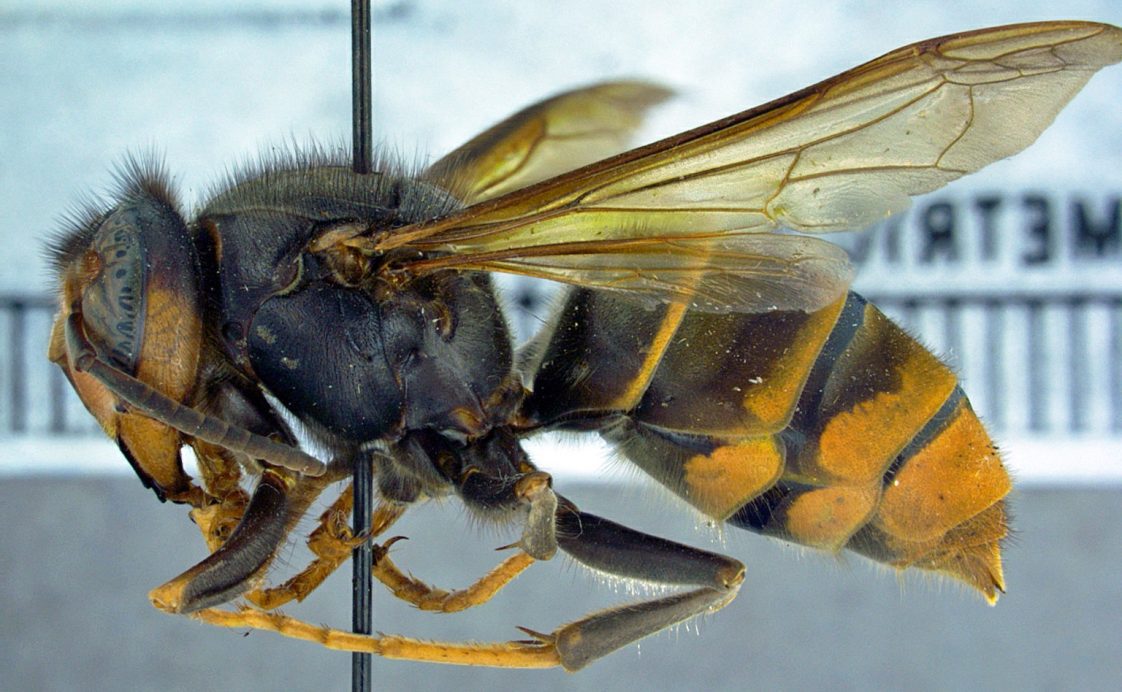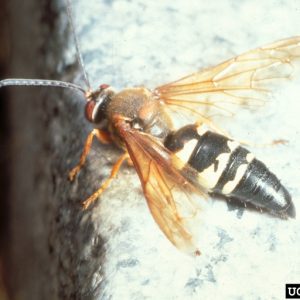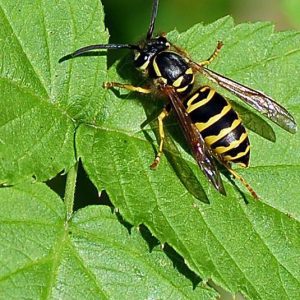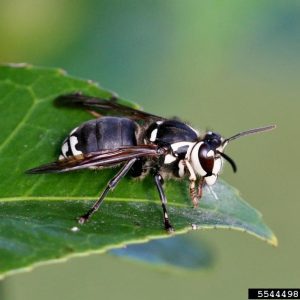Bees & Pollinators

Honey bees are under a lot of stress worldwide. In the United States, beekeepers deal with terrible bee parasites called Varroa mites, disease, habitat loss, and widespread pesticide use. However, there are worse problems that they current don’t have and don’t want.
Two years ago, the northern giant hornet/Asian giant hornet—also known as the murder hornet—was found in the Pacific Northwest. This enormous insect quickly became famous, because they are big enough to seriously harm humans. What wasn’t as widely publicized is that they voraciously hunt honey bees and even destroy whole honey bee colonies. To make matters worse, that hornet isn’t the only honey-bee hunter. Asian and European beekeepers have trouble with another hornet called the yellow-legged hornet (Vespa velutina) that US beekeepers haven’t had to worry about. Now, this honey-bee predator has just been found for the first time in the contiguous United States, with a specimen being found near the port of Savannah, Georgia in early August.
Yellow-Legged Hornet
Yellow-legged hornets are honey-bee hunters and can significantly reduce an apiary’s population. Research in Europe attributes losses up to 50 percent of honey-bee colonies from this predator in some areas. Once an apiary is found, the yellow-legged hornet colony focuses on this concentrated source of meat and quickly decimates the honey bees to feed their young. Yellow-legged hornets hunt honey bees by hovering in front of the hive entrance, capturing flying honey bees with their legs, then quickly butchering the honey bee—usually only keeping the thorax because it contains the most meat in the body. The thorax is then taken back to the hornets’ nest to be fed to their larvae.
With its discovery in Georgia, the USDA-APHIS, Georgia Department of Agriculture, and University of Georgia’s Department of Entomology are carefully examining the area, looking for more hornets. Other states are also on the lookout and appealing to the public to be additional eyes on the problem.
This species of hornet behaves like hornets native to the United States and makes large, round-to-oval paper nests, usually in tree or shrub branches, where the colony raises their young communally. They also have a similar life cycle to the native hornets. Females overwinter in secluded spaces in trees or leaf litter, emerge in spring, and start colonies of their own. By mid- to late-summer, these colonies are large and may have populations in the thousands.
The yellow-legged hornet is a large insect, with the original foundress of a colony being approximately 1.5 inches long, while her offspring are approximately 1 inch.
Lookalikes
The yellow-legged hornet bears some resemblance to a few species of wasps and hornets native to Alabama. The most obvious identifier of the yellow-legged hornet is in its name. The lower half of their legs are yellow. Also, the abdomen of the hornet has yellow bands that shade from yellow to orange at the tip.
There are several species of wasps and hornets native to Alabama that look like yellow-legged hornets.
-
Cicada Killer Wasp (Sphecius speciosus)
Howard Ensign Evans, Colorado State University, Bugwood.org
-
Eastern Yellow Jacket (Vespula maculifrons)
Jon Yuschock, Bugwood.org
-
Baldfaced Hornet (Dolichovespula maculata)
Johnny N. Dell, Bugwood.org
Cicada killer wasps (Sphecius speciosus)
Cicada killers are generally harmless, solitary, and nest in the ground. They are much larger than yellow-legged hornets, usually 2 inches in length. Note that their legs are all orange-brown, and their abdomen has three yellow bands and a solid black tip. They hunt cicadas, which they use to feed their young.
Eastern Yellowjackets (Vespula maculifrons)
Eastern yellowjackets are common and usually 1 inch in length, sometimes a little larger. They are hunter/scavengers and nest in empty spaces, usually underground, in hollow trees, or in voids in structures. The whole length of their body is black and yellow striped, with bright yellow legs.
Baldfaced Hornets (Dolichovespula maculata)
This species are what people typically think of as hornets in Alabama. They make an egg-shaped paper nest similar to the yellow-legged hornet. They are also about the same size, with most of them approximately 1-inch long. These hornets tend to be white and black striped. In fact, this is where their name bald faced comes from, as they were formerly called piebald (meaning white-striped) hornets.
No Need for Fear
It is unlikely that the yellow-legged hornet is present in Alabama right now. That said, the state has a major seaport that receives container ships that could bring it in. If you find a hornet and think it might be a yellow-legged hornet, do beekeepers a favor and take a photo or a sample to your local Extension office, so they can contact entomologists for proper identification.




